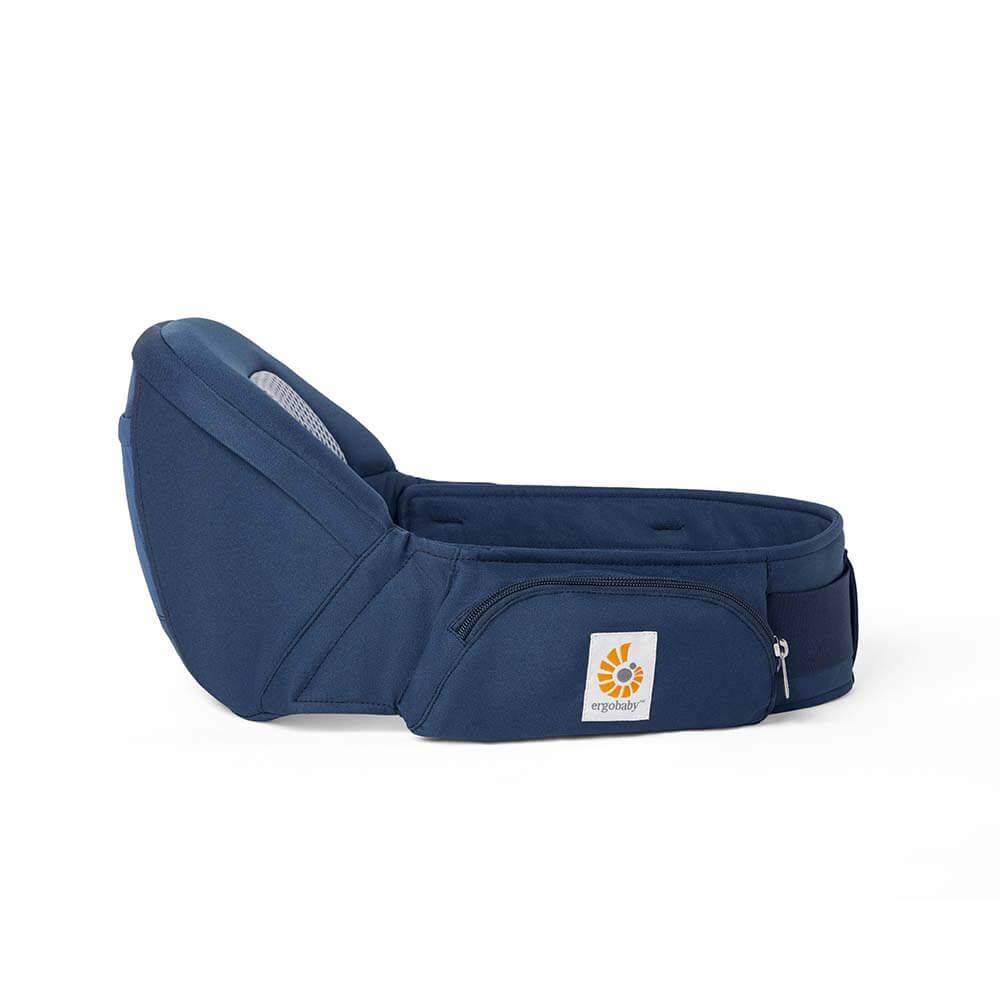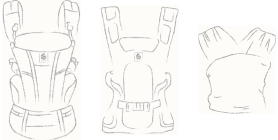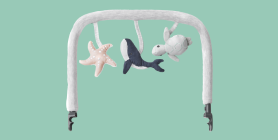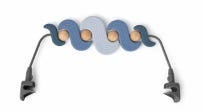Henrik Norholt
Pregnancy is an intense period in any woman’s life, filled with surprisingly rich and varied emotions, as well as visions of your future life as a mother. Amidst the joyful prospects of soon being able to welcome your little one, some expectant mothers are concerned that they may develop a postpartum mood disorder or depression. Postpartum depression is among the most disabling disorders for women in their childbearing years and the leading cause of non-obstetric hospitalization among women in the United States, affecting as many as 1 in 5 women. And because it happens during that very period where the new baby is the most vulnerable and sensitive to a mother’s mood and behavior, this depression can have a strong impact on the developing child, as well as the whole family. In this article, we will review the basic understanding of postpartum depression, and uniquely, we will describe the potential direct and indirect contributions of parent-baby skin-to-skin contact and babywearing
“Baby carrying strengthens the bond between you and your baby.” This is a statement you often hear from baby carrying advocates, be it experienced mothers, babywearing consultants or midwives. It really only takes one look at a calm secure parent and her or his quiet, relaxed, content and alert baby in a good baby carrier to instinctively sense that this statement is probably quite true.
These are very fundamental questions: Should I give ample physical contact to my baby? Or, should I leave it more or less physically separated from me in the hope that this best fosters independence? For many parents, instincts and intuition are sufficient guidelines for their parenting choices. However, such instincts can be challenged by conflicting views, purported by some experts in the field. Some will argue that giving too much physical contact to a baby will make it clingy and dependent in the long run. One informational resource for such vital decisions comes from the field of science, in this
One of the salient features of a well-designed baby carrier is that it keeps the carried baby in a correct ergonomic position. The obvious question which follows from such a statement is what constitutes a correct ergonomic carrying position for a newborn baby? A minimum requirement for an ergonomically correct position is that it should ideally promote a healthy development of the baby’s hips and spine. One of the conditions which pediatricians will normally investigate in a newborn child and in subsequent well-baby check-ups is that of developmental dysplasia of the hips (DDH). Hip Dysplasia definition and occurrence DDH is a disorder related to what is commonly known as the hip joint. The hip joint is where the head of the thigh bone (the femur) meets with the hip socket (the acetabulum). Hip dysplasia is diagnosed when there is either a complete or partial dislocation of the head of the thigh bone, so it no longer fits snugly and firmly into the hip socket; or instability, as
For most parents, infant massage is a rewarding activity in its own right. Just consider the sheer enjoyment of touching and gently rubbing and stroking this little marvel of nature, with its lush, soft and delicately fragrant skin and all its subtle, yet clear signs of appreciation of being massaged. Over and above being a mutually pleasurable activity, research into infant massage over the past decades has established a range of beneficial effects on the infant, and equally important, on the relationship between the mother and her baby. In this article, we will look at some of the effects of infant massage on premature and full-term babies, respectively. These effects include weight gain, sleep organization and mother-baby relationship.
Infant massage for premature infants
Extensive research has been conducted on the effects of infant massage on stable pre-term infants. Certainly, premature birth is no trivial matter. At present approximately 14% of infants in the United States are
One of the major sources of frustration and even guilt in early motherhood is breastfeeding. Yes, for some mothers breastfeeding runs utterly smoothly, but for others, breastfeeding challenges become a partially painful and uneven ordeal. The range of complaints includes cracks and fissures in the nipples, sore breasts, infections, fungi, concerns with having enough milk, and feelings of having to feed too frequently and thus becoming a milk-producing machine. These conditions make breastfeeding less of the pleasant bonding activity which most mothers envision for their unborn child. So, what can help these mothers? Perhaps a few breastfeeding tips and education.
First Recourse: Mastering the Basics
The first recourse or breastfeeding tip is naturally to make sure that the basics are in place. There is plenty of literature out there, which an expectant woman can read at her own leisure. The website of La Leche League is a very good on-line source of information. La Leche League has
Have you ever thought of giving birth at home? Perhaps you have not chosen this option if you have given birth in the U.S., as so few women have – currently around 0.67%. Consequently, there is only a relatively small chance that you know someone who has personally had the experience of giving birth at home. For some, it may seem unfamiliar that a birth at home should give you a greater level of security and satisfaction with your birth. However, in this article, we will examine a variety of the aspects that differ between a home birth and a hospital-based birth. And although you may in fact never choose to deliver at home, some of the features of a home birth may be an inspiration for the way you choose to give birth in a hospital. In the small, but relatively progressive country of Denmark in Northern Europe, with a population roughly equal to that of the state of Wisconsin, a group of midwives has been working over the past twenty years in close and mutually beneficial collaboration
"Are you mother’s little baby?…… Are yooouuu mother’s little baby?…… … Aaaare yooouuuu mother’s liiiiittle baaaaby?……" A mother is conversing with her little baby. She speaks with a high-pitched voice and her facial expressions are exaggerated, both in duration and in style. The baby is not yet sufficiently developed to respond in words to the mother’s repetitive and enthusiastic question, but somehow the mother perceives the baby to be fully capable of taking part in the conversation and she feels encouraged to go on. Those of us witnessing the “conversation” notice the joy and sheer fun emanating from the duo. We intuitively sense their mutual love and find it sweet. According to research described in the classic child development book “The First Relationship – Infant and Mother,” by pre-eminent psychologist, Daniel Stern, and according to a host of others, the vital role in baby brain development in these innocent play episodes is confirmed. These common “conversations” between mother
Should my baby face in or out in a carrier?
Many baby carriers offer a variety of carry positions, but not all carry positions are safe to use throughout baby's development. This blog will share some of the developmental milestones to look for so you can safely carry your baby though the world.
Let's begin with validating the basic idea that it is good for a baby to be stimulated by parents and other caregivers. One of the key results of the great amount of research done on the baby's developing brain is indeed how vital appropriate stimulation is.
When the baby is born, the number of neurons in its brain corresponds to adults'. However, what is missing is the mind-boggling amount of connections that will eventually shape that particular baby's personality and intelligence. These connections are formed by and are utterly dependent on the type of stimuli that the baby receives from the outside world.
Every experience the baby is exposed to will activate some part of the brain's neurons.
Because of the unusually close relationship that exists between a mother and her baby, especially during pregnancy and breast feeding, all efforts to prevent obesity in your baby will have to begin with you, the mother and to a lesser degree with the father as well. This fact presents both a challenge, but also some unique possibilities to shape your baby's appetite, digestion and metabolism and to lay the foundation for your baby's lifelong healthy lifestyle. In this article we will take a look at some general lifestyle recommendations, and we will also discuss some less-known measures and approaches that will help you and your baby stay or become lean. First of all, if there were ever a time where it would be a good idea from a nutritional point of view - to make sure that your food is packed with anti-oxidants and essential fatty acids, the period when you are either pregnant or breastfeeding your baby is that time. And that means lots of fruits and vegetables, nuts, fatty fish, whole

























